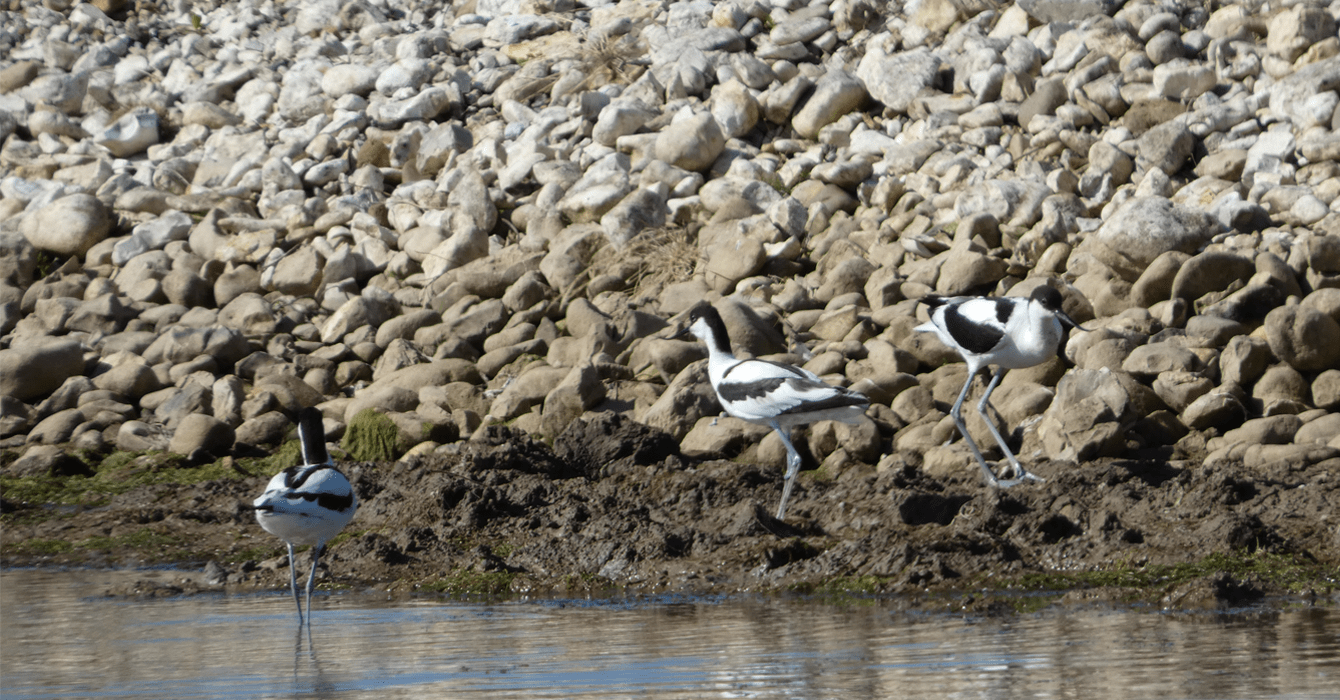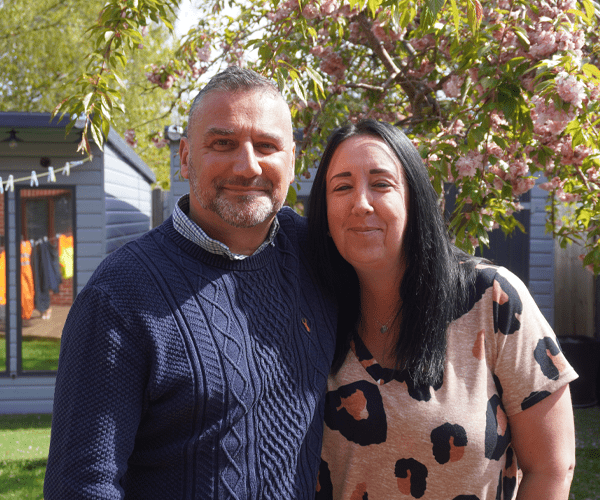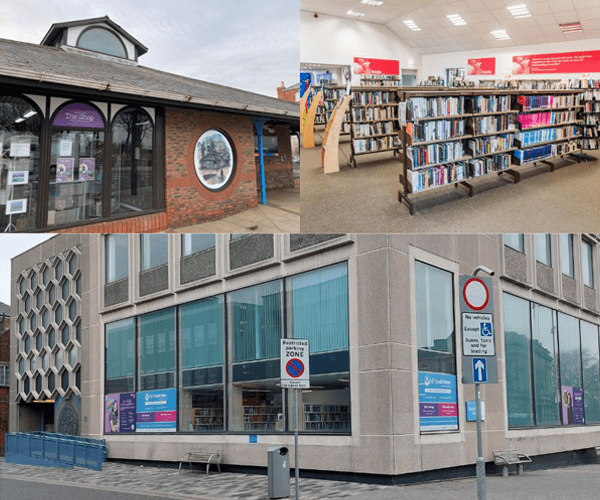Chris
1/30/2025 10:32:27 AM
4 mins read

February 2 is World Wetlands Day, providing the opportunity to celebrate one of the UK’s greatest wetlands – The Humber Estuary - and the extraordinary wildlife that live alongside it.
We are privileged to live alongside an estuary that is designated as a Site of Special Scientific Interest (SSSI), a Special Area of Conservation (SAC), a Special Protection Area (SPA), a European Marine Site and a Ramsar Site because it supports a rich variety of habitats and species, and is recognised as one of the most important estuaries in Europe for overwintering birds.
North East Lincolnshire Council and its partners work hard to protect the estuary and the birds and wildlife habitats surrounding it, whilst continuing to secure vital industrial investment in the region, and provide an environment in which both can successfully co-exist.
It is a delicate balancing act and, six years ago, they found a solution by creating a site that would both protect the natural environment, while at the same time offering a major incentive for new industry to move to the South Humber Bank.
The site was unique because the wetland at Cress Marsh was created to mitigate for industrial development that hadn’t yet taken place, and it was one of the first purpose-built mitigation sites of its kind in Europe.
It came about because North East Lincolnshire Council had ambitions to transform the South Humber Bank’s economic fortunes, and secured £42m of investment to develop land and infrastructure between Grimsby and Immingham under the South Humber Industrial Investment Programme (SHIIP).
The 40-hectare Cress Marsh site, near Stallingborough, nestles close to the Humber Bank and near to established, and new, industrial sites. With support from the European Regional Development Fund (ERDF) and the Greater Lincolnshire Local Enterprise Partnership (GLLEP), the land was transformed into a wildlife haven.
Four years later, the region’s second mitigation site opened. Novartis Ings was completed in October 2022 to the west of the Novartis Factory site on Moody Lane, Pyewipe. A further two field areas are earmarked for mitigation sites for the future.
Novartis Ings was developed thanks to funding from ERDF and the Greater Lincolnshire LEP, and the transfer of land, free of charge, from the pharmaceutical company, Novartis Grimsby. This generous gesture was the company’s lasting legacy to the local community after manufacturing at the site next door for more than 70 years. Land formerly owned by Solenis completed the 20-hectare site.
Novartis Ings created a temporary stopping off point for wildlife on their vast migration journeys along the East Atlantic Flyway, providing waders, in particular, with a rich invertebrate food source on the mudflats. The East Atlantic Flyway is a super-highway that follows the coastlines from the Arctic, through Europe and into Africa. An estimated 175,000 migrating birds on this flyway stop off on the Humber Estuary every winter.
The rich feeding grounds found along the Humber Estuary act like a service station on this route by providing a rest stop for these migrating birds. Some simply pass through on their way to other places, but large numbers of golden plover, lapwing, black tailed godwit, curlew and others also stay all winter to benefit from the relatively mild climate combined with a reliable food source revealed twice a day by the tide. Eventually most migrate back to their Northern breeding grounds in the spring.
There is a hide for local birdwatchers to observe the comings and goings of birds and wildlife at Novartis Ings, but the primary aim is to offer specially protected areas for wading birds to rest and recuperate in safety, and with little disturbance.
At Novartis Ings, the birds can often be seen feeding on the mud flats over the opposite side of the nearby North Wall and when the tide comes in, they cluster and fly over the wall to feed and roost.
By September, with the changing of the seasons, comes the beginning of the winter migration. Over the next three months, thousands of birds will stop off on the sites, sometimes for a few weeks, to break their 5,000 mile journey from the Arctic to Africa.
It is difficult to accurately log the number of birds using these sites. Data comes from the Wetland Bird Survey data (WeBS), and via Roger Wardle, a local wetland consultant, who was responsible for creating Cress Marsh and Novartis Ings alongside NELC. But the council also relies heavily upon local wildlife volunteers, whose invaluable contribution helps to maintain an overview of the comings and goings of the different species, as well as carrying out cattle welfare checks.
A core team of volunteers, who are avid bird watchers and nature enthusiasts, with permission from the council, regularly visit Cress Marsh. They can record what they see during the time they are there on a Google data sheet, which asks for the species, how many, what time they were seen. Another volunteer visits Novartis Ings daily and records the bird activity during his visits, as he has done since before the site was prepared as a wetland.
Although the sites need to remain predominantly undisturbed, they do require some management. Sian Niblo, Ecology Officer at NELC, said: “Cattle are the main management tool on both sites. This year we have had 40 cows on site at Cress Marsh and 15 at Novartis Ings. The cattle are especially suited to wetlands and they graze here from April to November to naturally mow the grass, creating microhabitats suitable for the invertebrates that the waders feed on.
“We also maintain the water levels on the lagoons on the sites. We try not to have any major variations in water. Although we may want them higher and lower at certain times, we do that incrementally so that we don’t disturb the invertebrate communities that the birds are coming to feed on.
“Different birds feed in different ways so we also make sure that we retain wet edges for the birds that probe into the mud to feed, such as oystercatchers.”
The sites are proving attractive, with more birds appearing each year.
“The avocet breeding season was phenomenal this year,” said Sian. “We class the season as March to September and we have resident breeding and migrant breeding. Our avocet numbers have really increased. At one point there were no avocets breeding in Lincolnshire. Avocets normally just pop in to breed and disappear again, but we have been having good numbers. They are also site faithful so, if they have bred here and fledged here, they will return here to breed and fledge again.
“We have seen breeding activity with avocets, little ringed plover, mallard, lapwing, and shelduck on both sites.”
World Wetlands Day is celebrated each year on 2 February to raise awareness about wetlands. This day also marks the anniversary of the Convention on Wetlands, which was adopted as an international treaty in 1971 in Ramsar. The Humber Estuary is designated a Ramsar wetland site.
Nearly 90% of the world’s wetlands have been degraded since the 1700s, and we are losing wetlands three times faster than forests. Yet, wetlands are critically important ecosystems that contribute to biodiversity, climate mitigation and adaptation, freshwater availability, world economies and more.
It is urgent that we raise national and global awareness about wetlands in order to reverse their rapid loss and encourage actions to conserve and restore them.
World Wetlands Day is the ideal time to increase people’s understanding of these critically important ecosystems.
In years to come, much of the hinterland of the Humber estuary will attract economic, industrial and other developments, but these mitigation sites should continue to offer protection to birds and wildlife far into the future.




